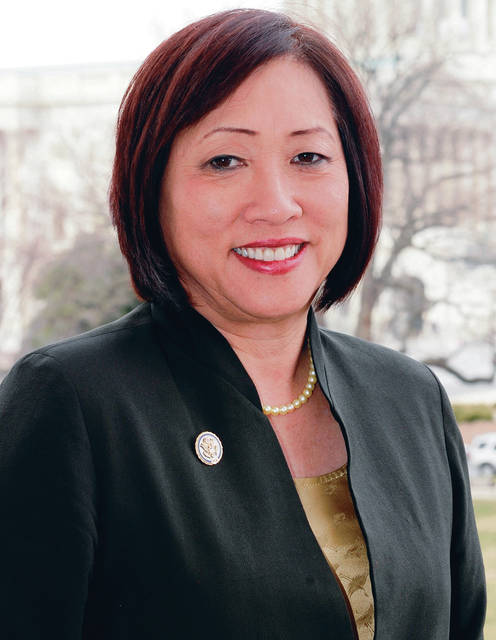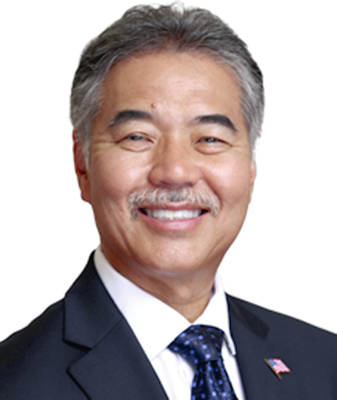HILO, Hawaii — Gov. David Ige and his primary Democratic challenger, U.S. Rep. Colleen Hanabusa, are running a neck-and-neck race, based on total campaign contributions and poll numbers.
They’re also evenly dividing the state’s ZIP codes and major islands when it comes to who’s sending them checks.
That’s according to a West Hawaii Today/Hawaii Tribune-Herald analysis of $100-plus in-state contributions reported to the Hawaii Campaign Spending Commission between Sept. 1, 2017, when Hanabusa set up her state campaign fund, and June 30, 2018, the most recent data reported. The next reports are due Wednesday.
Contribution amounts aren’t a clear indicator of likely votes, two political analysts caution. But in a race that one longtime political expert says is too close to call, the numbers offer a glimpse of the candidates’ support base.
“I wouldn’t bet on either candidate right now,” said Neal Milner, a former University of Hawaii political science professor who’s been following state politics for decades. “I think it’s going to go down to the wire.”
Ige and Hanabusa are racing toward a winner-take-all contest for the Democratic bid in the Aug. 11 primary, just two weeks away.
The newspaper analysis, sifting through thousands of records and pinpointing 2,306 contributions worth $2.9 million that met the criteria, doesn’t include contributions of less than $100 donated by businesses and individuals, nor the thousands of dollars being pumped into the race by super PACs, so-called “independent expenditures” that aren’t reported by candidates. It does include $100-plus contributions from unions and registered political action committees that are required to report, however.
The $2.9 million accounts for a little more than 78 percent of the total $3.7 million the candidates raised from all contributions, including out-of-state donors and contributions of less than $100.
On both Oahu and Hawaii Island, Ige leads in the number of major contributions, while Hanabusa is ahead in total dollar amount of those contributions. The mayors of both Oahu and Hawaii Island are endorsing the incumbent governor, which will likely bring more votes and more money to the candidate.
Obviously Oahu, the seat of state government, provides the bulk of campaign money to state candidates, as well as delivering most of the voters. But with Oahu voters accounting for just 67 percent of all voters who participated in the 2016 primary, the importance of the neighbor islands can’t be underestimated, especially in a close election.
Ige reported 1,115 contributions totaling $1.32 million to Hanabusa’s 958 contributions totaling $1.33 million on Oahu.
On Hawaii Island, Ige had 82 contributors to Hanabusa’s 38. But when looking at the total dollars of those contributions, Hanabusa leads, with $59,901 in contributions to Ige’s $48,668.
Hanabusa dominates both Maui County and Kauai, however, sweeping both the number of $100-plus contributions and the amount. In Maui County, which includes Maui island as well as Lanai and Molokai, 52 contributors gave Hanabusa $47,657, while 22 contributors gave Ige $28,780. On Kauai, 29 contributors gave Hanabusa $40,950 to Ige’s 10 contributors giving $12,485.
Glenna Wong, Ige’s campaign spokeswoman, said political considerations make it difficult for those two county mayors to offer endorsements. Maui Mayor Alan Arakawa is term-limited, and Kauai Mayor Bernard Carvalho Jr. is running for lieutenant governor and, if he wins, must work with whichever gubernatorial candidate wins.
“There haven’t been any political endorsements there, but we believe they support the governor,” Wong said. “It’s a very competitive race. We definitely feel the support on the ground, and we have seen an increase in contributions. … We’re still working and we feel the momentum building.”
Hanabusa’s campaign echoes those sentiments.
“Rather than winding down, our grassroots activities are ramping up,” Hanabusa said in a statement. “In these final weeks, our focus is on keeping this momentum going statewide because every vote counts.”
Drilling down
When it comes to the Big Island, a ZIP code level analysis shows Ige has strong money support in Hilo proper up to Honokaa, as well as Volcano, Naalehu and into South Kona. Hanabusa’s support base is in Puna and most of West Hawaii, including all of Kailua-Kona and Waimea.
Puna support could be especially critical to Hanabusa if the race remains as tight as forecast. In 2014, Hanabusa unsuccessfully sued the state Elections Office after two precincts were closed because of storm damage. This year, the Kilauea volcano and lava flows are wreaking havoc with election plans in the area.
Ige and Hanabusa split the downtown Honolulu ZIPs. After that, it gets more interesting, with Ige pulling more money from his Pearl City home base as well as Aiea, Ewa Beach, Mililani, Kunia, Wahiawa, Kahuku and Haleiwa. Hanabusa picked up her home district of Waianae, as well as Waimanalo, Kailua, Kaneohe, Waipahu, Hauula, Kapolei and Waialua.
On Maui, Hanabusa has more money from Hana, Kula, Kahului and Wailuku ZIP codes than Ige. Ige has Kehei, Lahaina and Haiku.
On Kauai, Ige has the most contributions in one ZIP code, Kalaheo, with Hanabusa taking Lihue, Kapaa, Koloa, Eleele, Kekaha, Anahola, Hanalei and Princeville.
Money in politics
While those who contribute money to a candidate are more likely to get out and vote for that candidate, the influence of big money from political action groups and super PACs can skew the predictions.
“People who contribute money are more attuned and involved in the election,” Milner notes.
But some donors give to both candidates, as a way to hedge their bets. And especially in local races such as for county seats and the state Legislature, low-budget candidate efforts such as door-knocking and sign-waving can’t be discounted.
“You can’t just tell from the amount of money,” Milner said. “It’s really hard to tell anything about the relationship between the amount of money and the votes. … You can never just take one source out of a campaign.”



